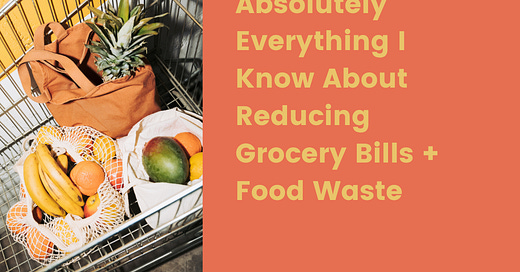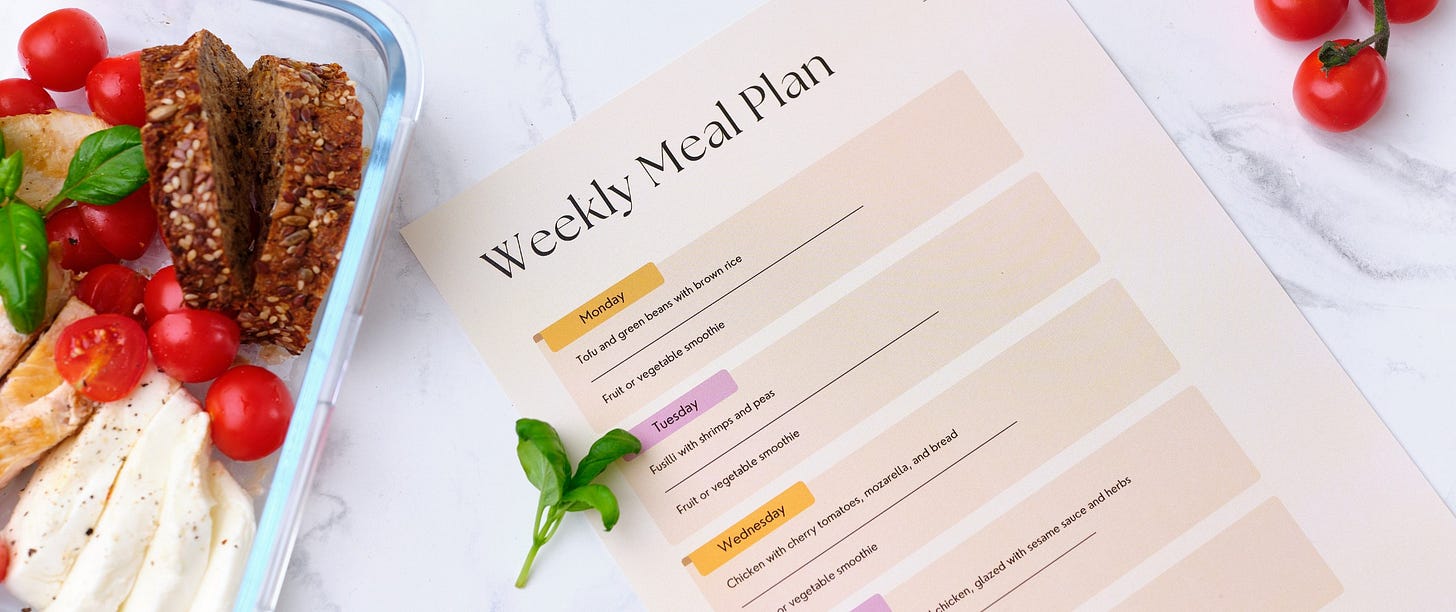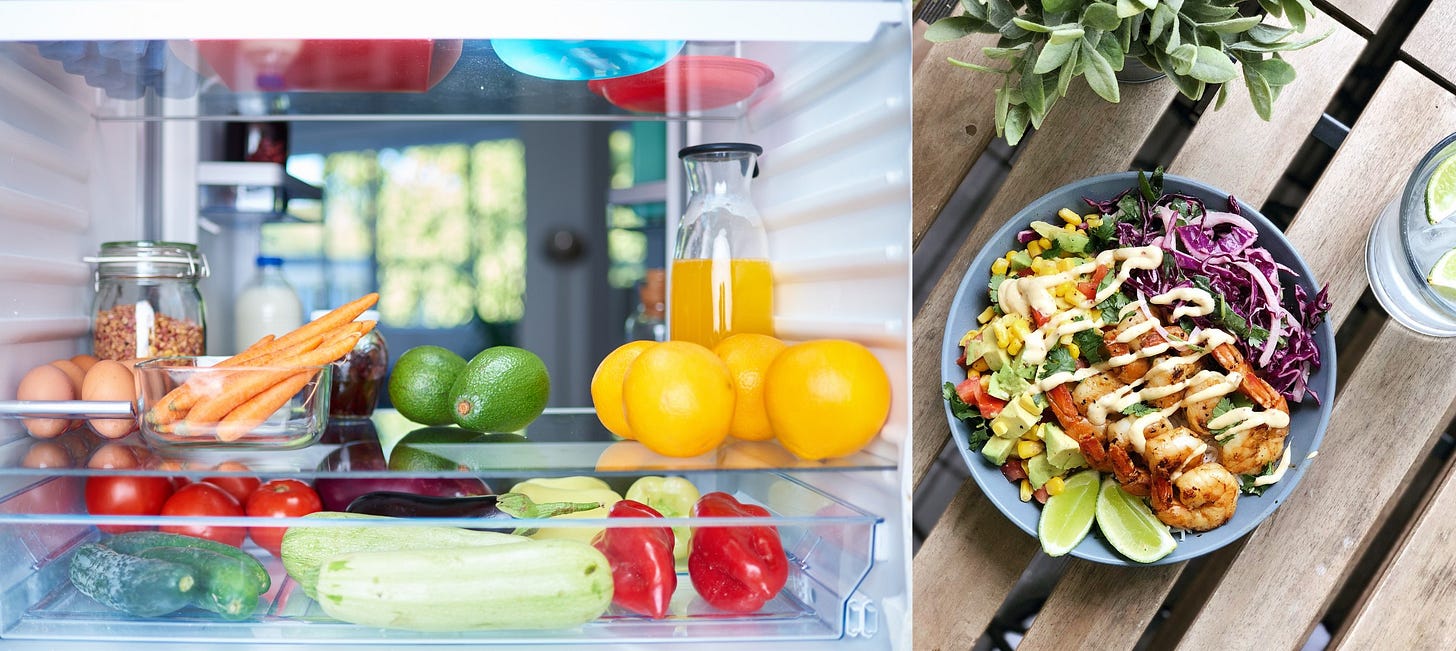Absolutely Everything I Know About Reducing Grocery Bills + Food Waste
Advice from your friendly neighborhood Depression Era Grandmother!
I’m so glad you’re here! I’m Sarah Von Bargen, a long-time online writer, marketing consultant, and coach. Every week we’ll be exploring ideas around spending our time, money, and energy on purpose + how to build a life we love that doesn’t make us broke or exhausted.
You probably don’t need me to quote FDA statistics to know that food prices have increased by almost 25% since 2020. And I’m not sure that’s changing anytime soon?? 🫠🫠
For years now, I’ve been joking-not-jokingly referring to myself as a Depression Era Grandmother. My desire to save veggie scraps for broth and to mend those jeans a third time doesn’t always feel very twenty-first century, but good news / bad news - this is a skill set that will probably serve me very well over the next four years!!!
So in light of already high grocery prices potentially increasing even further - thanks, tariffs! - I thought I’d share everything I’ve learned about reducing both grocery bills and food waste.
But first, my credentials:
I have been eating a 99% meat-free diet since I was 12. You learn a lot about cooking and grocery shopping when you live in Minnesota and don’t eat meat. (My “hallpass meats” are EXTREMELY crisp bacon, crab legs on Christmas, and chicken strips, like, three times a year.)
I paid off $50,000 in school debt while earning $34,000 a year as an ESL teacher.
Later, I saved $84,000 in 1.5 years for a downpayment on our duplex. I was earning about $100,000 a year at the time.
Now, there are a lot of things I did to spend less and earn more and I’ll be the first to say nobody can budget their way out of true poverty.
All that is true and estimates suggest that 30 - 40% of the American food supply is wasted. An average three-person American household spends $940 a month on groceries. That means they could be tossing up to $4,500 of food every year!
Even if we’re incredibly intentional about food waste, most of us would prefer to spend less on groceries rather than more, right?
Intro level tips for saving money on groceries + reducing food waste
Plan meals based on what you already have
We’ve already bought it, so we might as well use it, right? When you’ve been cooking long enough, you can usually look at what’s in the fridge and pantry and plan a meal. But if you’re not an experienced home cook the SuperCook website is a God-send.
You just type in the ingredients you have and it’ll provide recipes!
Buy as much as you can at Aldi
If you’ve never shopped at Aldi before, it can be … an experience.
The parking lot is small. You need to bring a quarter so you can unlock a grocery cart. You’ll want to bring your own bags, otherwise you’ll be buying them or awkwardly packing your groceries into the previously used, weirdly-sized boxes they provide.
The checkout experience is unlike any other grocery store. Maybe there’s an elderly security guard watching over the whole shebang?
Regardless!! Aldi is cheaper than pretty much any other grocery store - cheaper than Walmart and even cheaper than CostCo (and you don’t have to buy in bulk.) Tofu is $1.29! Ready-to-bake pizza dough is 99 cents! The quality of the food is similar to what you find anywhere else and some of it I actually prefer to “higher end” brands - their full fat cottage cheese is my favorite.
You might not be able to find absolutely every single item you need there, but you should be able to find the basics. And if you don’t want to deal with the carts-for-a-quarter and packing your groceries into cat food boxes, they offer grocery delivery and curbside pick up!
Experiment with non-meat protein sources
I promise I’m not trying to convert all of you to vegetarianism! It’s just that non-meat protein sources are exponentially cheaper.
A pound of ground beef: $6
A pound of dried black beans: $1.76
A pound of tofu: $2.00
A pound of lentils: $1.92
Especially if you’re cooking for a family and / or anyone between the ages of 15 - 25, appetites are huge and the protein budget can pretty quickly get out of control!
Red lentil dal and black beans + rice are crowd-pleasers that are easy to make in bulk and then freeze. No joke, I make this crispy air fryer tofu multiple times a week and the guys in my house eat it as fast as I can make it.
Buy in-season and / or local produce
In the upper Midwest, oranges are cheaper in the winter; apples are cheaper in August and September, and tomatoes are cheaper in July. Obviously, produce that’s grown nearby is usually cheaper than something that needs to be shipped thousands of miles.
Beyond that, January strawberries and tomatoes just … aren’t very good.
Find cheap recipes you genuinely love
Change isn’t sustainable when it feels deprivational or “overly virtuous.” But if you find 10 - 15 recipes that you legitimately enjoy that also just happen to use cheap ingredients, you’ll also reduce your grocery bill in a way that feels pretty painless.
Budget Bytes is a long-time favorite for cheap recipes; she even breaks each recipe down into total cost and cost per serving! Cooking For Peanuts shares affordable vegan recipes.
Some of my favorite cheap, delicious recipes: Chinese egg and tomato, Sauteed garlicky cabbage with rice, Cold tofu with green onions and sweet, spicy sauce, Savory Dutch baby.
Intermediate tips for saving money on groceries + reducing food waste
Keep reading with a 7-day free trial
Subscribe to Yes & Yes to keep reading this post and get 7 days of free access to the full post archives.






